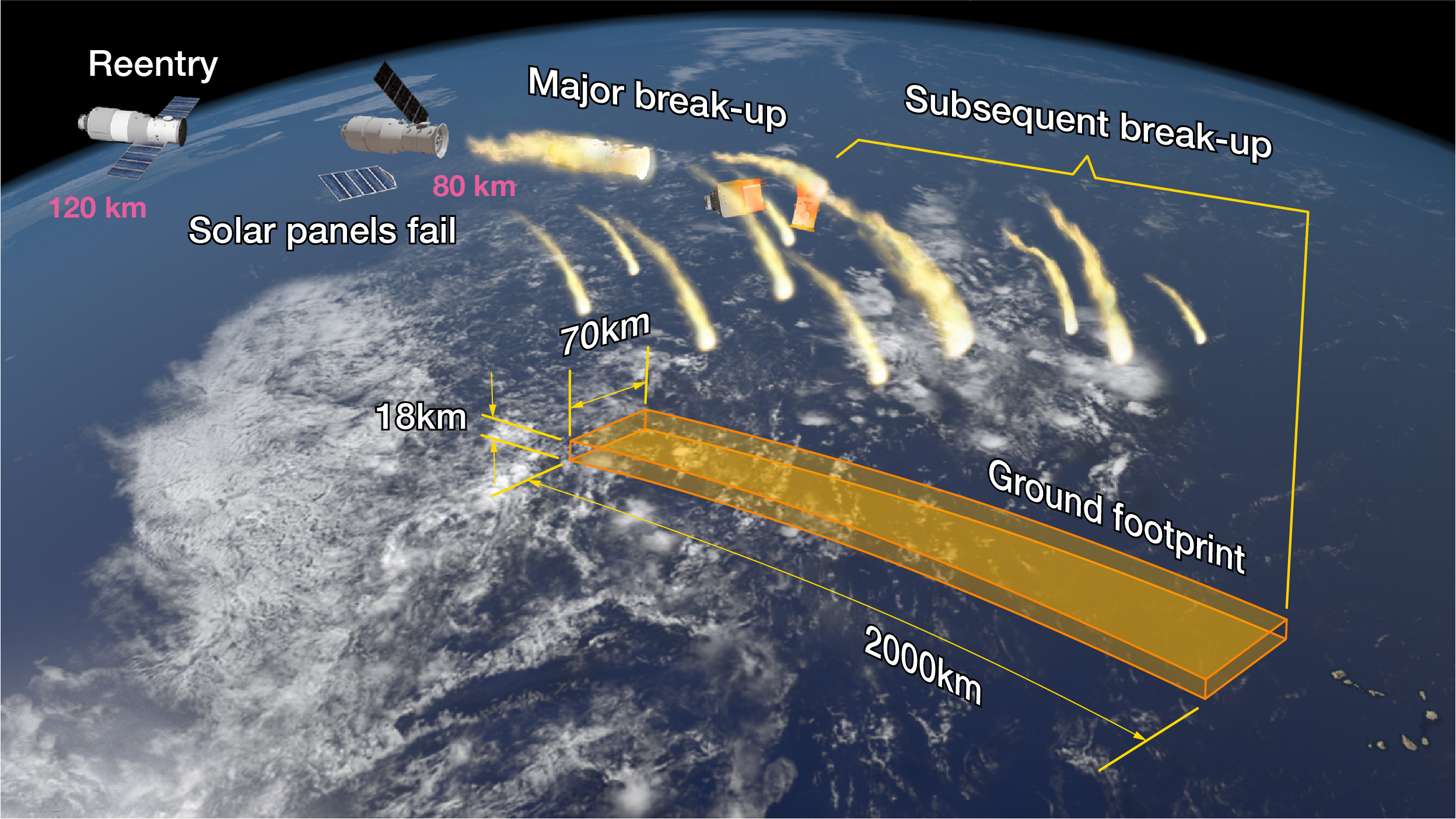China's Space Station Will Fall to Earth, But When and Where? Here's the Latest

The impending re-entry of China's Tiangong-1 space station is being closely monitored by The Aerospace Corporation's Center for Orbital and Debris Reentry Studies (CORDS), but experts still can't say exactly when and where the bus-size laboratory will fall to Earth.
Currently, the space station is predicted to re-enter Earth's atmosphere around April 1, plus or minus 4 days.
However, due to the uncertainties involved, it is very difficult to predict the exact timing of any space object re-entry, according to the Aerospace Corporation. [Chinese Space Station's Crash: Everything You Need to Know]
Sources of uncertainty
According to CORDS, sources of uncertainty include:
- significant variation in the density of the upper layers of the atmosphere
- orientation of the spacecraft over time
- physical properties of the spacecraft, including the exact mass and material composition
- exact location and speed of the space station
"When aggregated, these factors translate into a re-entry timing uncertainty that is roughly 20 percent of the 'time to go'—the time remaining between the date of the prediction and the predicted date of re-entry,"notes a CORDS update.
Surviving debris
Tiangong-1 will reenter somewhere between the latitudes of 43 degrees north and south, and any surviving reentry debris will most likely fall into an ocean.
"The odds of space debris hitting you are less than one in 1 trillion. Surviving debris from Tiangong-1 might be carrying or be comprised of toxic materials. CORDS experts advise that it is best to not touch any space debris or breathe in any vapors it may release," according to the orbital debris and reentry study group.
Breaking space news, the latest updates on rocket launches, skywatching events and more!
Visibility conditions
What can a ground observer see?
Incandescent objects during this re-entry may be visible and will likely last up to a minute or more, depending on time of day, visibility conditions, and the observer's location, according to Aerospace's CORDS update.
China's Tiangong-1 space lab launched into orbit without a crew in September 2011. It hosted three visiting spacecraft - the uncrewed Shenzhou 8 spacecraft, which made the first docking with Tiangong-1 in November 2011, and the crewed Shenzhou-9 in 2012 and Shenzhou-10 in 2013.
After the Shenzhou-10 mission, Chinese flight controllers placed Tiangong-1 in sleep mode and in March 2016, the space lab stopped sending data back to Earth, sealing its fate.
China does have a second small space station in orbit today, Tiangong-2, which launched in September 2016 and hosted a visiting crew during the Shenzhou-11 mission later that year.
Leonard David is author of "Mars: Our Future on the Red Planet," published by National Geographic. The book is a companion to the National Geographic Channel series "Mars." A longtime writer for Space.com, David has been reporting on the space industry for more than five decades. Follow us @Spacedotcom, Facebook or Google+. This version of the story published on Space.com.

Leonard David is an award-winning space journalist who has been reporting on space activities for more than 50 years. Currently writing as Space.com's Space Insider Columnist among his other projects, Leonard has authored numerous books on space exploration, Mars missions and more, with his latest being "Moon Rush: The New Space Race" published in 2019 by National Geographic. He also wrote "Mars: Our Future on the Red Planet" released in 2016 by National Geographic. Leonard has served as a correspondent for SpaceNews, Scientific American and Aerospace America for the AIAA. He has received many awards, including the first Ordway Award for Sustained Excellence in Spaceflight History in 2015 at the AAS Wernher von Braun Memorial Symposium. You can find out Leonard's latest project at his website and on Twitter.


